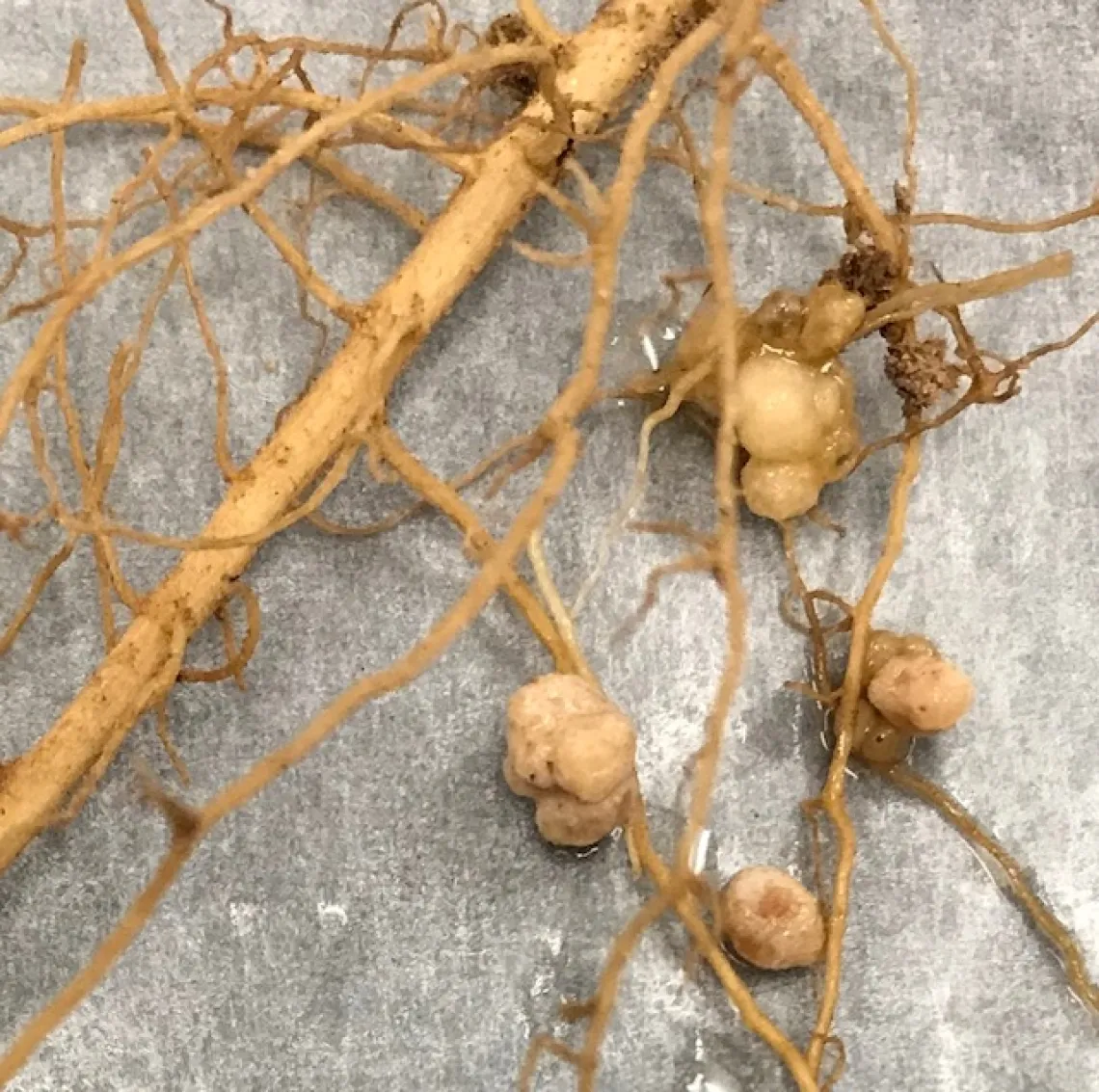SBAR Researchers Find Nodules on Guar Plants, Isolate Rhizobia and other Bacteria

Nodules from the roots of guar plants grown at NMSU’s Leyendecker Science Center.
As a legume, guar has the capability of forming a symbiotic relationship with Rhizobia (a nitrogen-fixing bacteria that is common in the soil) to fix their own nitrogen. This decreases the amount of nitrogen fertilizer necessary for growing crops, and improves the fertility of the soil for the next crop. This symbiosis occurs within nodules attach to the legume’s roots, so the presence of nodules is an indication of a healthy legume crop. The symbiosis is specific to a particular location and a particular combination of plants and microorganisms. Understanding the symbioses that develop with guar in New Mexico can help agronomists make recommendations about planting conditions and the potential need for inoculation (fertilizer application) to help new plants start well.
At other guar variety and irrigation growth trial sites in New Mexico, SBAR researchers had not been able to observe nodulation in guar plants. That changed during the 2019 growth season when nodules containing Rhizobia were observed on 11 of the 24 varieties of guar grown by Dr. Kulbhushan Grover’s group at the NMSU Fabian Garcia Plant Science Center outside of Las Cruces, New Mexico. Dr. Laura Rodriguez-Uribe of the SBAR Characterizations and Co-Products Component worked to characterize the Rhizobia and other bacteria within the nodules. Specifically, she was able to show growth of the isolated Rhizobia on media, enabling gene amplification of further study.

